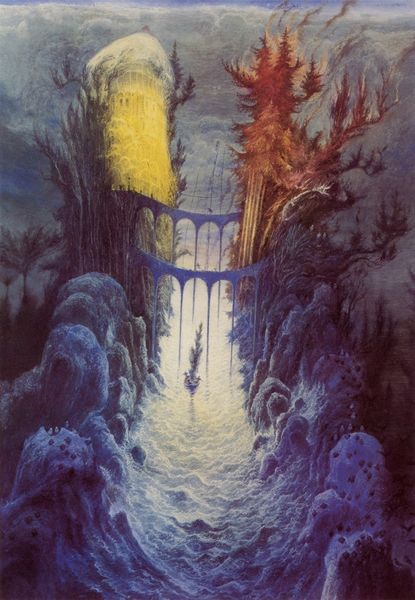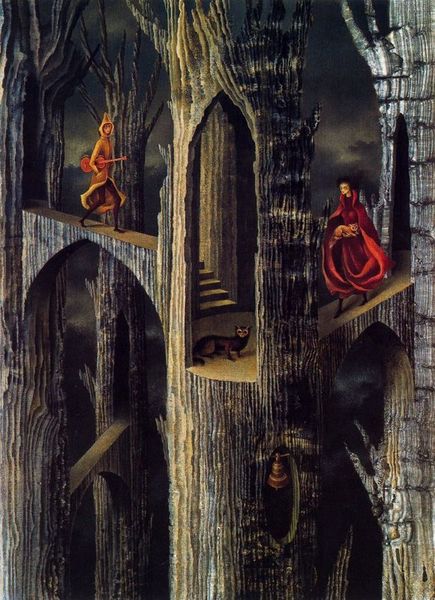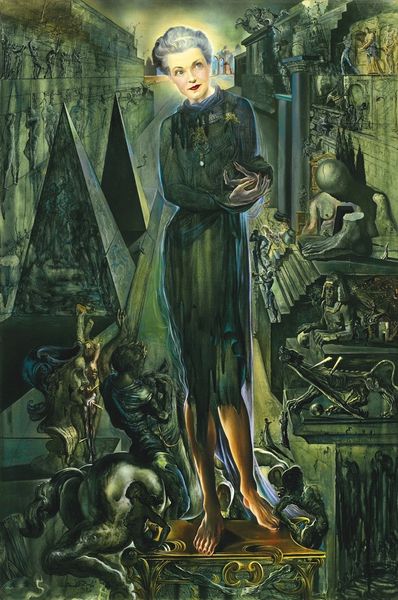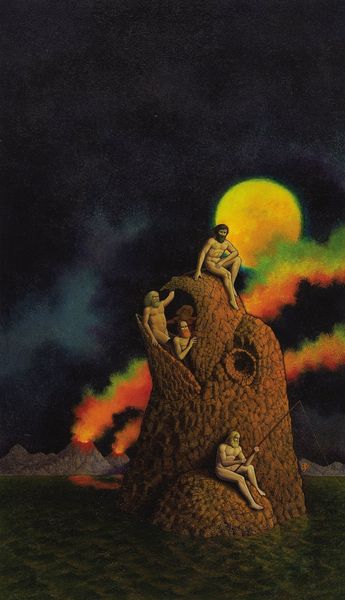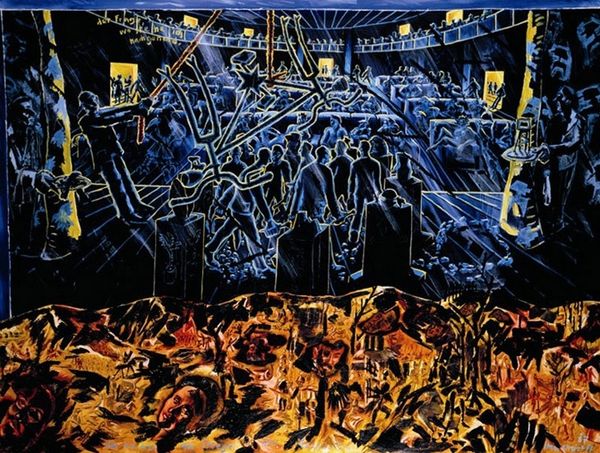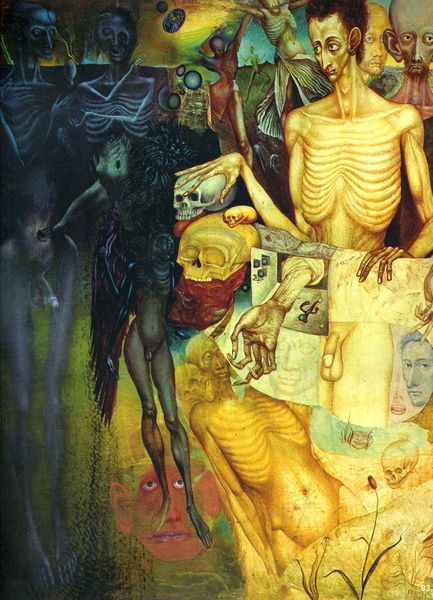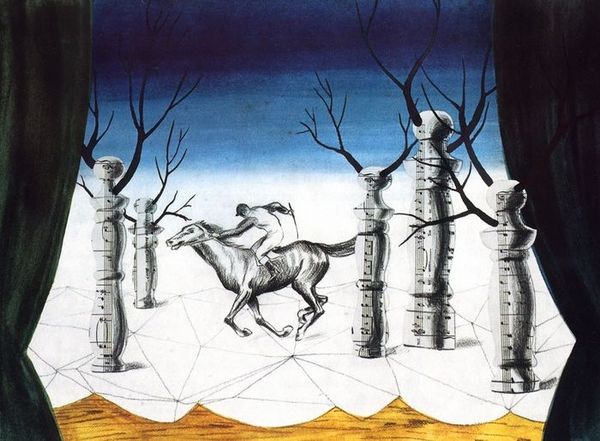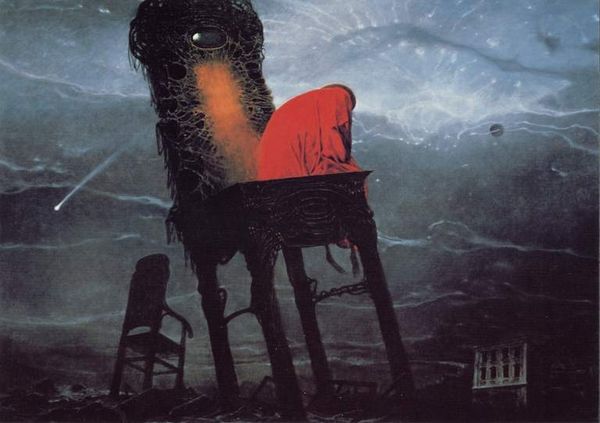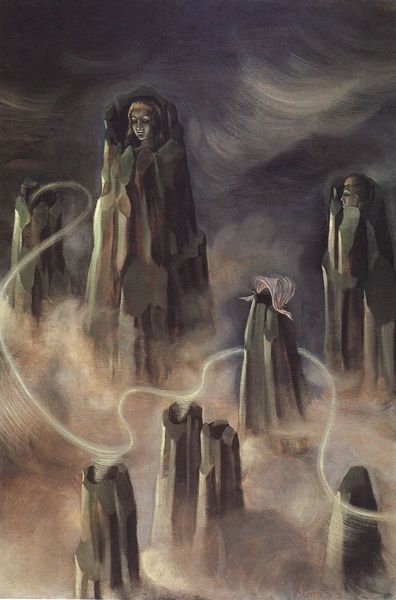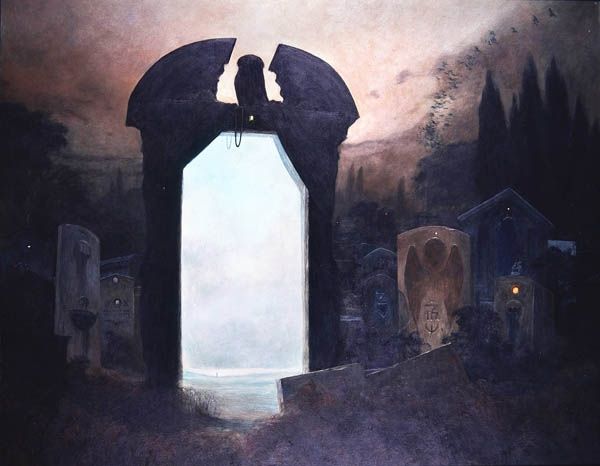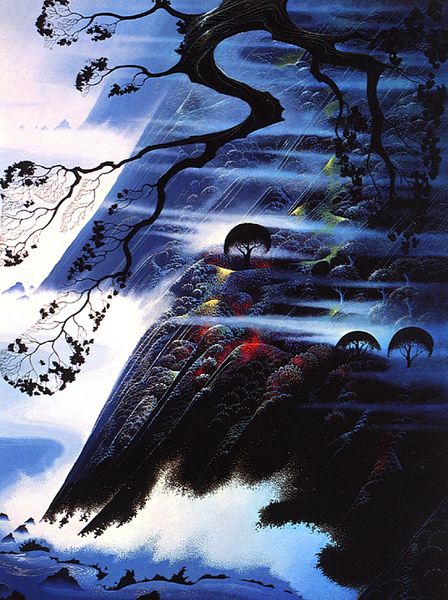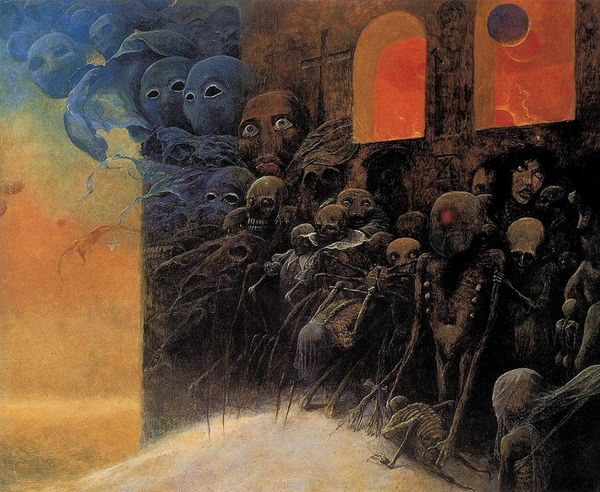
mixed-media, painting
#
portrait
#
african-art
#
mixed-media
#
allegory
#
narrative-art
#
painting
#
graffiti art
#
kitsch
#
figuration
#
social-realism
#
cityscape
#
history-painting
#
identity-politics
#
regionalism
#
erotic-art
Dimensions: 48 x 40 cm
Copyright: Archibald Motley,Fair Use
Curator: This mixed media work before us is "The First One Hundred Years," created by Archibald Motley in 1972. Editor: It hits you like a punch to the gut, doesn’t it? So much visual information, and all of it tinged with this ominous, almost gothic blue. There's something deeply unsettling in its crowded composition. Curator: Indeed. Motley uses this eerie color palette to underscore the legacy of racial injustice in America, specifically focusing on the century following the Emancipation Proclamation. This piece reflects on how systemic racism persisted, even after slavery was formally abolished. Editor: Look at how he layers these symbols: The KKK figures, the Confederate flag hanging limply, and disturbingly, the hanged figure next to a miniature Statue of Liberty. And then, the almost caricatured Black faces peering from the windows above...It is overtly political. It's challenging the romanticized narratives of progress and freedom we often tell ourselves. How does the socio-political atmosphere of the time shape the artist choices of representing these? Curator: In the context of the Civil Rights movement, with ongoing struggles against segregation and police brutality, Motley uses this imagery to highlight the continued violence and oppression experienced by African Americans. The haunted house and faces are clearly referencing historical issues of racist and cultural segregation within the United States. The Statue of Liberty with the hanged figure next to her further suggests that while it promotes a narrative of liberty and opportunity it cannot hold up to its own promises. Editor: It's also impossible to ignore the... kitsch quality to some of it, isn’t it? Those almost cartoonish demons, the lurid details... It feels like a deliberate choice to provoke and disorient, mirroring the absurd reality of racism. And that unsettling, surreal juxtaposition – high art and low art colliding to deliver the blow. Curator: Right, he refuses to let the viewer off easily. It’s not a detached historical observation; it’s an active indictment of contemporary society and social norms of his time. Motley reminds us that these historical injustices continue to have tangible impact on communities and are ongoing problems within a larger system. Editor: Looking at "The First One Hundred Years" truly is to engage with a potent visual history, or more exactly an active commentary of history in all its complexity and painful truth. Curator: Indeed, it compels us to confront uncomfortable truths about the United States, fostering a dialogue of its impact on the country. It challenges to question what exactly "progress" really means within a landscape defined by power and privilege.
Comments
No comments
Be the first to comment and join the conversation on the ultimate creative platform.
